Chilling Out
With your support, we can survive the humidity of the upcoming spring.
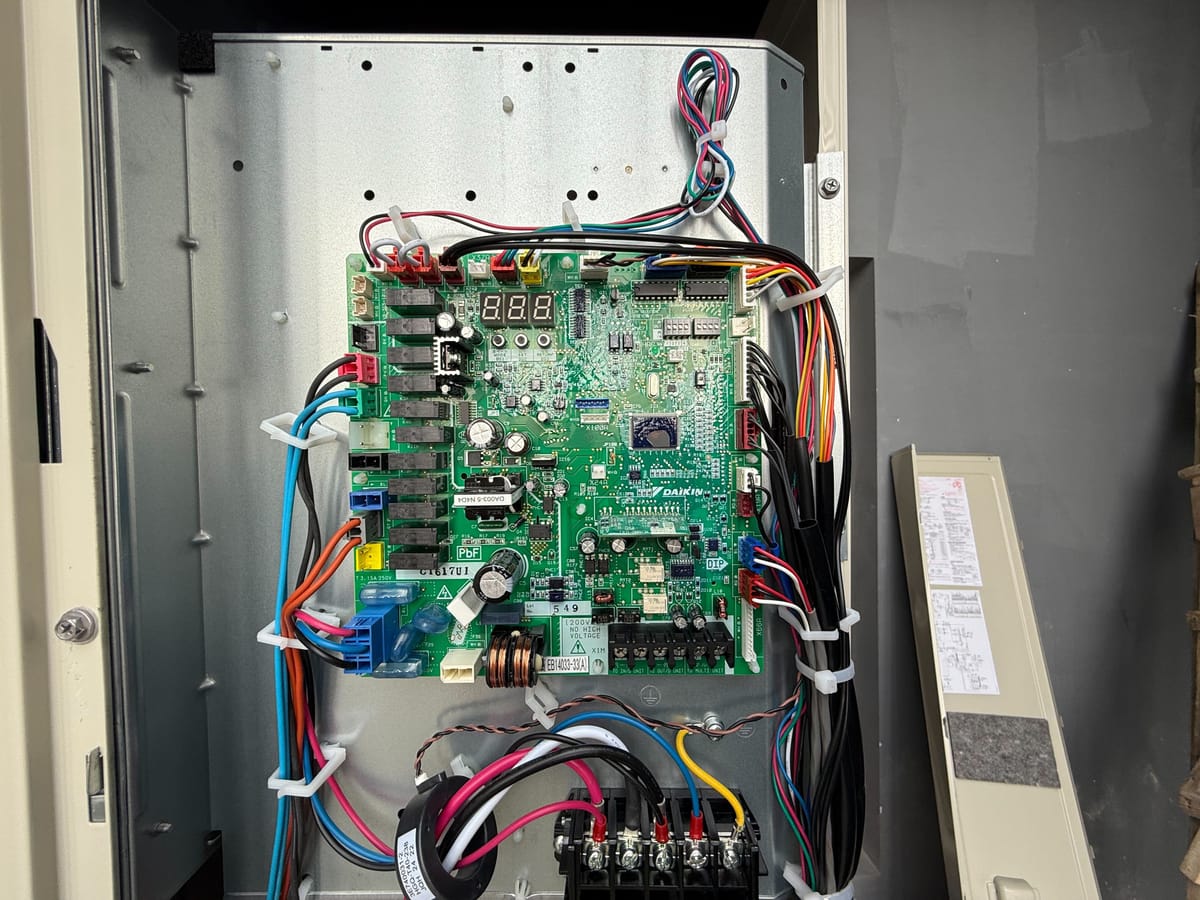
Finally, we have enough money to finish the AC job. If you bought something from us because of the previous article, thank you for your support.
The HVAC system we ordered costs a significant amount of money—more than most of the productive equipment we’ve purchased (and yes, AC is indeed a crucial piece of productive equipment). One main reason is that we designed our small factory as a completely open space to allow flexible traffic flow. Another reason is that we chose Daikin over other Chinese brands offering products in the same range.
We didn’t blindly pick the most expensive option. In fact, we were eager to give local companies a chance—Guangdong is home to several famous Chinese AC brands—but they all lost our business due to their poor customer service. Until today, we haven’t established any connection with the official channels of those brands. We tried all the contact information on their websites but found nobody to talk to at all. It seems none of them care to maintain an official pre-sales channel, since most commercial customers just find an HVAC supplier to handle everything (similar in the US, though). On the other hand, a Daikin sales representative reached out to us within an hour after we filled out the contact form on their official website and appeared at our site the same day.
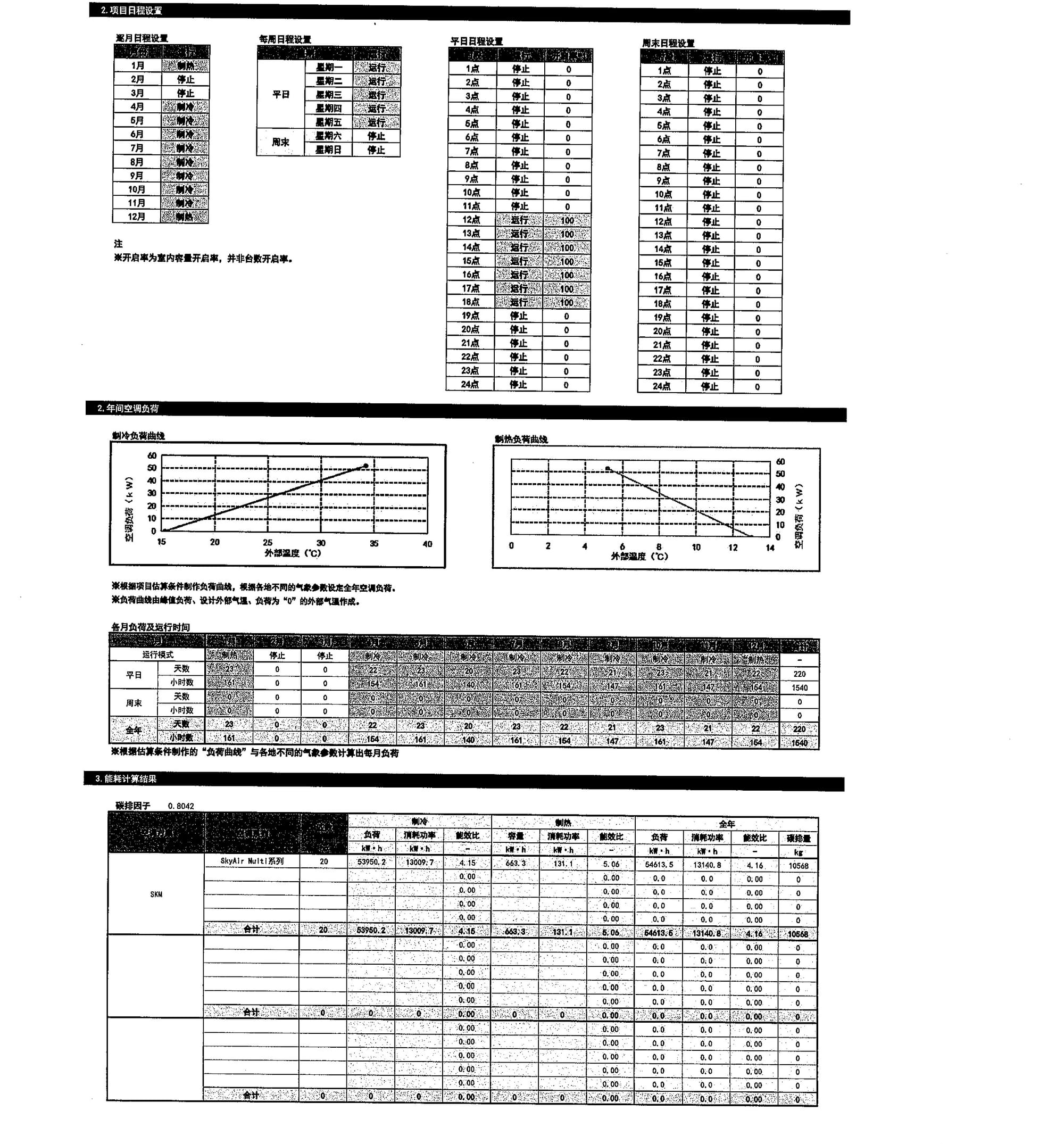
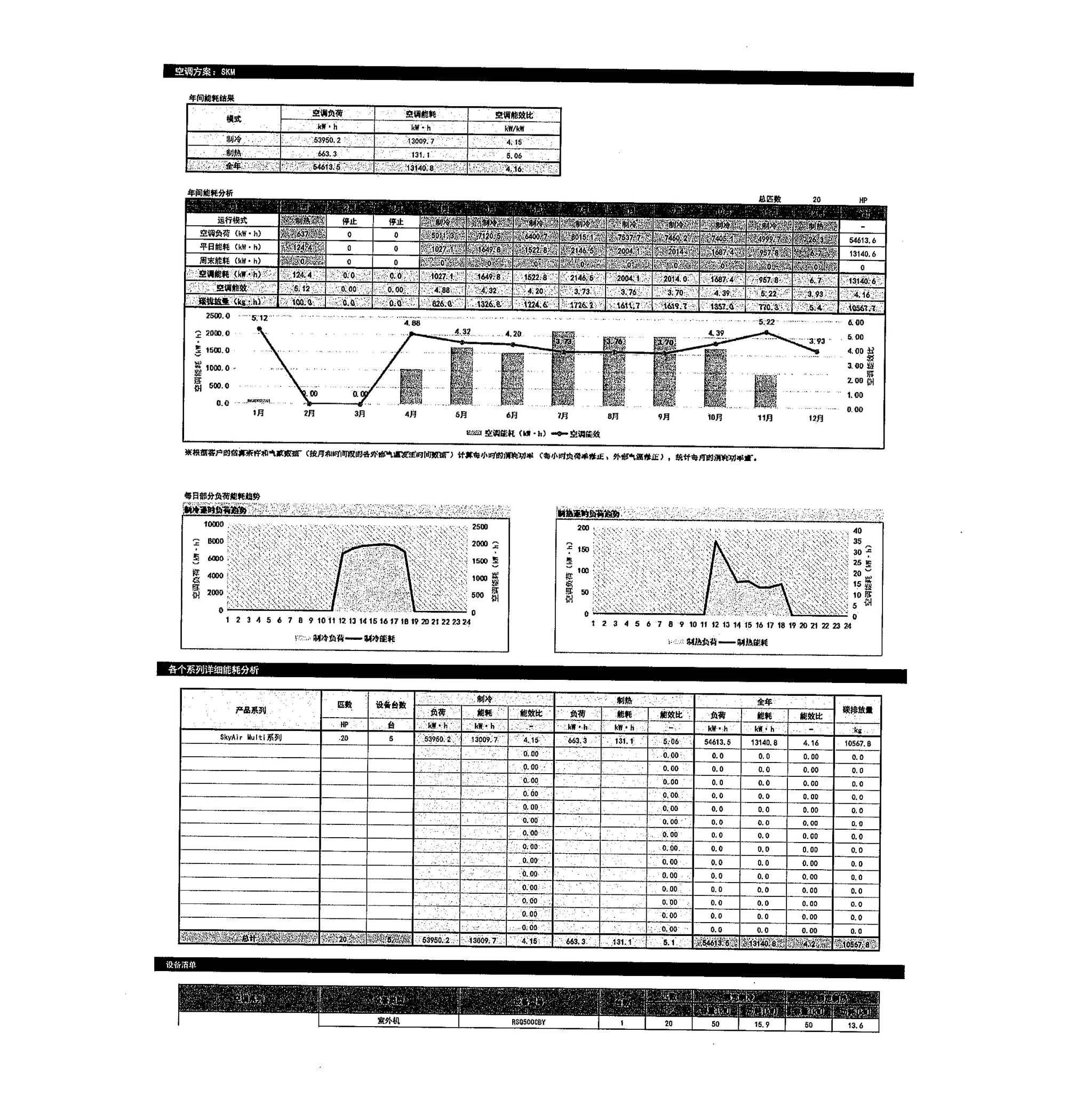
Daikin provided us with a detailed analysis of our potential energy consumption and carbon generation.
Their quick response wasn’t even the most impressive part. After measuring our space, Daikin’s team generated a report based on our location, floor height, and the direction our windows face to demonstrate the ideal cooling capacity we need, along with the potential energy consumption and carbon generation throughout the year. They’re so confident about the energy efficiency of their machines that there’s even a guarantee clause in the contract: if our electricity consumption exceeds their prediction, they will compensate us up to a certain amount.
The energy efficiency is also what ultimately made us pick Daikin over its counterparts. If we chose a same-tier product from Midea—which is the least we’d consider—we could save about CNY 40k (~ US$ 5,500) upfront, but our annual electricity costs would be nearly CNY 20k higher. Unlike in the US, industrial and commercial electricity in China costs much more than residential electricity, which seems counterintuitive for a manufacturing superpower. On the other hand, this implies significant subsidies for residential electricity, and since the electricity grid is state-owned in China, it’s easier to implement subsidies in a way that’s both beneficial and efficient.
In contrast, back in California, we only have PG&E, which charges extremely high rates and is constantly causing wildfires. Let us know how shitty is the electricity supplier in your state.
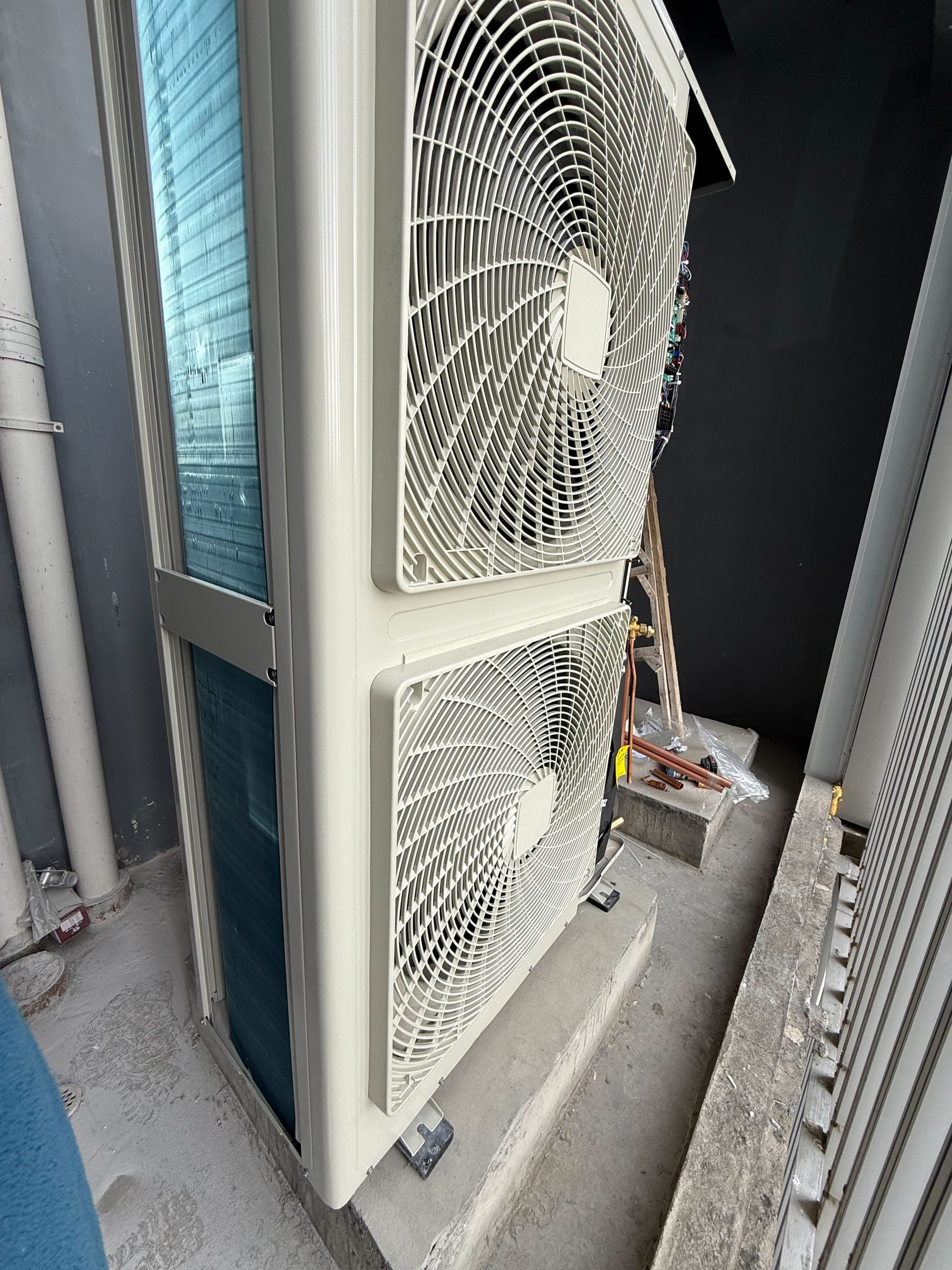
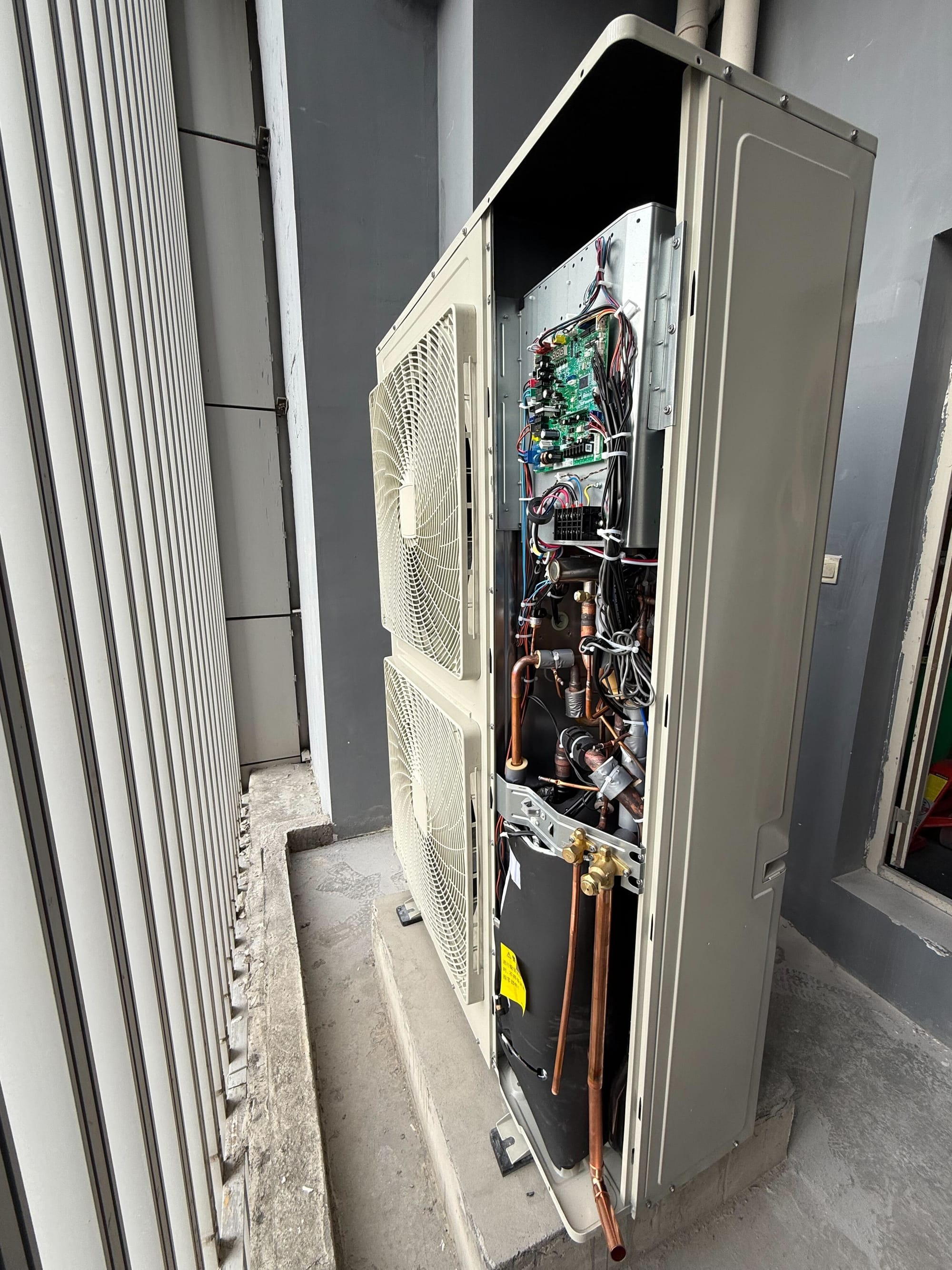
The outdoor unit: we chose the side discharge version considering where it’s placed—and it’s also cheaper.


However, the top discharge version has a better look... What do you think? Credit: Daikin China
Tier 1 Energy Label. Some investment, big savings.
The construction is handled by a subcontractor of the Daikin dealership, so there’s no precision Japanese engineering you might have expected to see. You can still see those worksite street arts like the ones we saw previously. An interesting fact: we’ve observed this a couple of times in previous construction work—all the workers use wobbling wooden ladders, which seem extremely dangerous. Not that they’re dangerous just because they’re wooden—a good wooden ladder often outperforms cheap metal ones. China even has a national safety standard for portable wooden ladders (GB7059), but the ladders we’re seeing definitely don’t meet the requirements—none of them have a locking mechanism, and they all look too thin. Is this another example of construction site brutalism like we saw last time?


Left: Wooden ladders the construction team brought; Right: A worker borrowing our own ladder.
Not entirely… which is why we didn’t stop them from using them (if we were able to). It turned out that by using light and loose ladders, they can perform impressive acrobatics—obviously violating all safety standards—but this allows them to shift positions without climbing down, greatly increasing efficiency when doing the pipe work.
Here’s an on-site example of a ladder stunt.
The pipework and installation of the ceiling units took two days, and we had to postpone the electrical work to the weekend due to the noise. One annoying aspect of Daikin is that their machines don't come with a remote control—we almost chose Gree because of this. Each ceiling unit is designed to be controlled by its own wall-mounted controller, which means four controllers on the wall for our setup. Four controllers on the wall! Along with lengthy wiring connected all the way to the corresponding unit. This is unbearable and unacceptable.
But if you're a fan of our backstage blog and read the previous article, you know we already have a solution:

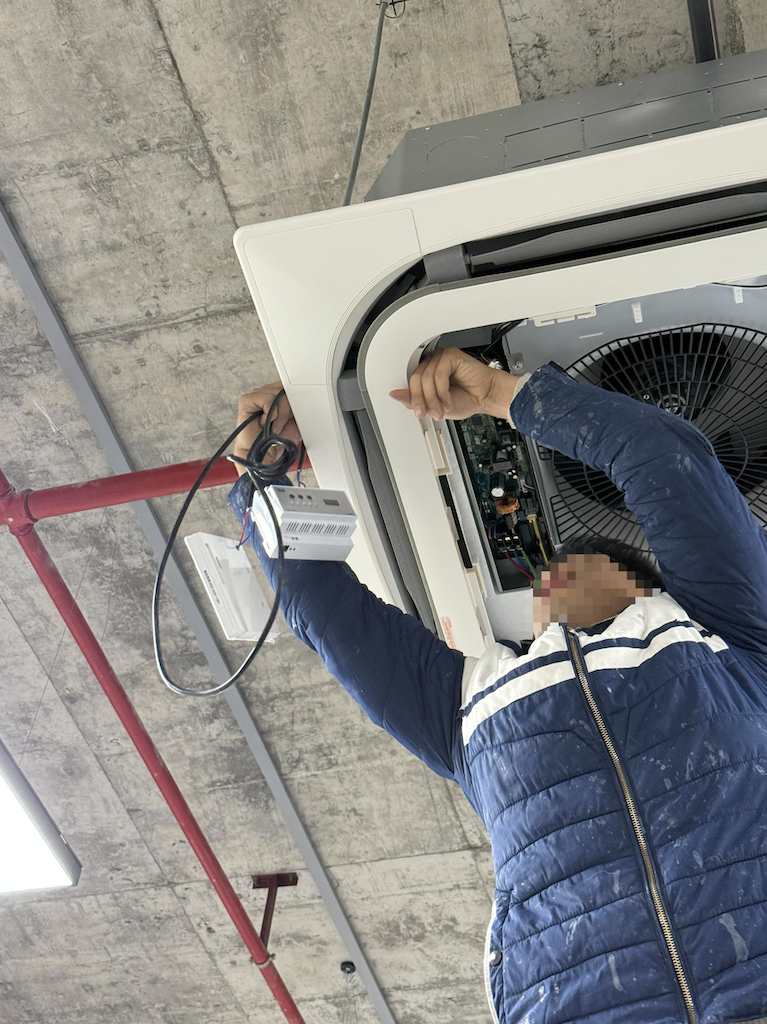
Left: The RS485 controller with a WiFi module; Right: An electrician installing the gateway on one of the ceiling units.
There are many solutions in the market to connect central AC systems to a smart home network. Most of them use an RS-485 controller that pre-integrates the protocols of common AC brands. We took it a step further with a product that also includes WiFi, allowing us to control it directly through Xiaomi Home—since all our other smart appliances, even the light switches, are from Xiaomi. (Seriously Xiaomi, when would you start selling cooler stuff in the US?)
The integration ran smoothly. It looks like the controller brand we chose lived up to their name (their website URL is literally vrvlink.com, lol. In case you don’t know, VRV stands for Variable Refrigerant Volume, a technology used in heavy-duty air conditioning systems, and the abbreviation has become industry jargon for these types of machines). We set up an automation to turn on the AC automatically when the humidity gets too high, and we’ll be able to see the results soon, as the most humid season in Southern China is just days away.
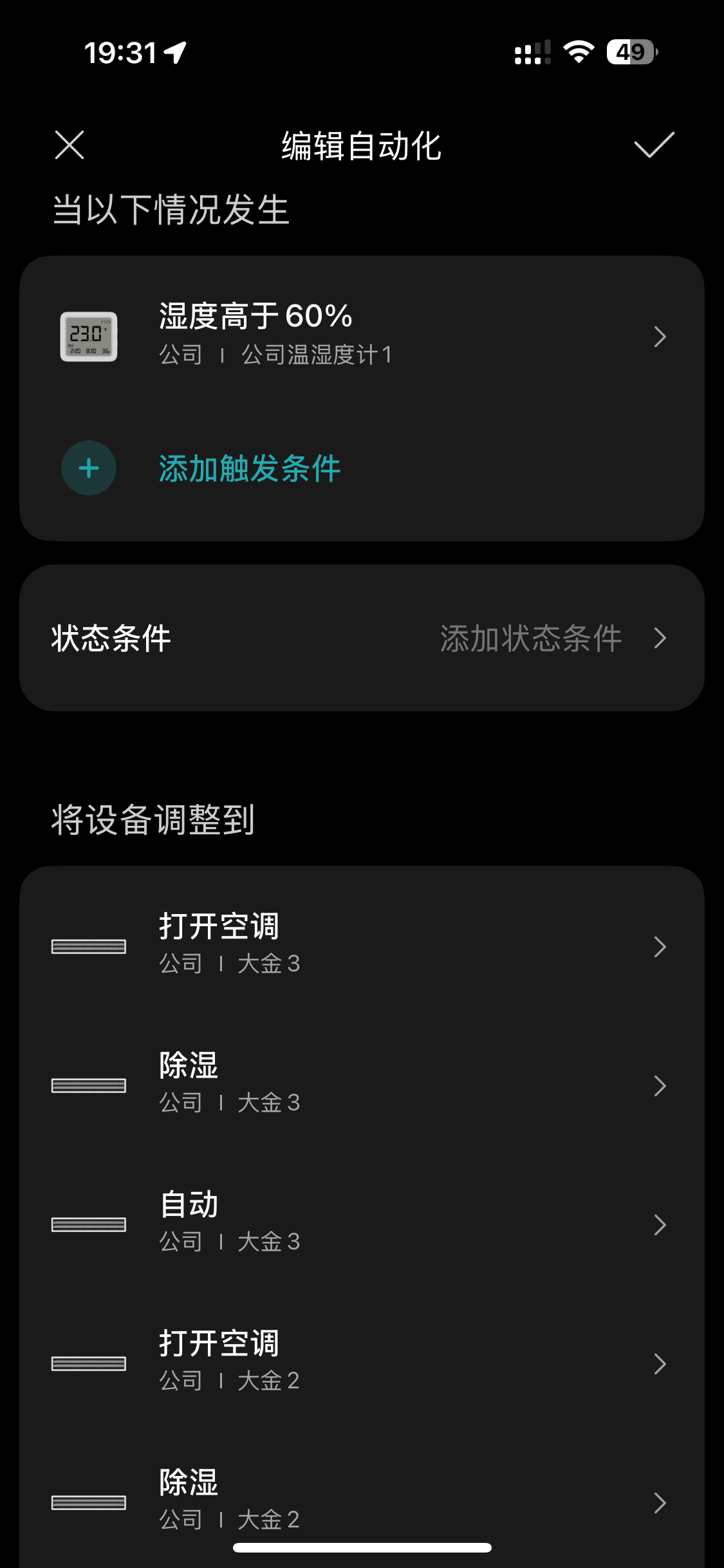
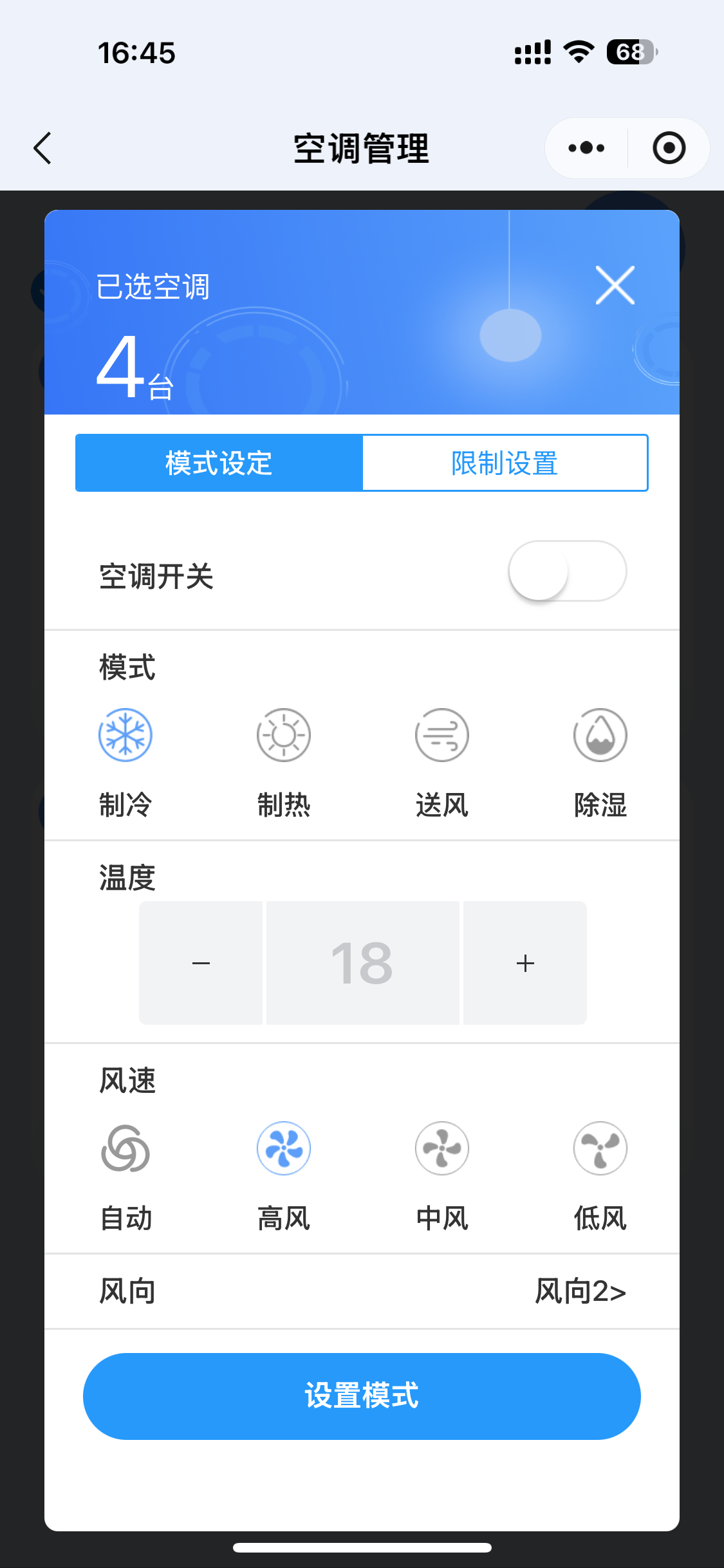
Left: The automation we set up in Xiaomi Home; Right: You can also control the AC through VRV Link’s Mini Program.
It turns out that VRV Link also has its own app, which communicates with the controller via Bluetooth, but it’s only available as a WeChat Mini Program. WeChat is so dominant in China that nearly everyone has it on their phone, and for many people it’s the only app they know how to use. As a result, WeChat introduced Mini Programs in 2017, allowing developers to build apps that run entirely within WeChat (absolutely violating Apple’s App Store rules, though Apple has acquiesced from the start).
Today, Mini Programs have become the most popular kind of internet app in China, and many domestic companies don’t even bother offering anything else, like a standalone mobile app or a website. People routinely buy bus tickets and pay taxes via Mini Programs, which is mind-blowing when you realize it all requires a WeChat account. Even some government services have moved fully onto Mini Programs.
As of now, the weather is still cool outside (around 15°C). We’ve already done a couple of tests on the ceiling units, so the in-room humidity is quite low. It doesn’t seem like a good day for a full-scale AC test, so we’ll save that for another time.
As we wrap up this article, the HVAC team is leaving as well, so we’ll call it a day. We’ll have more new toys to share next week, so be sure to follow our upcoming blog posts!
